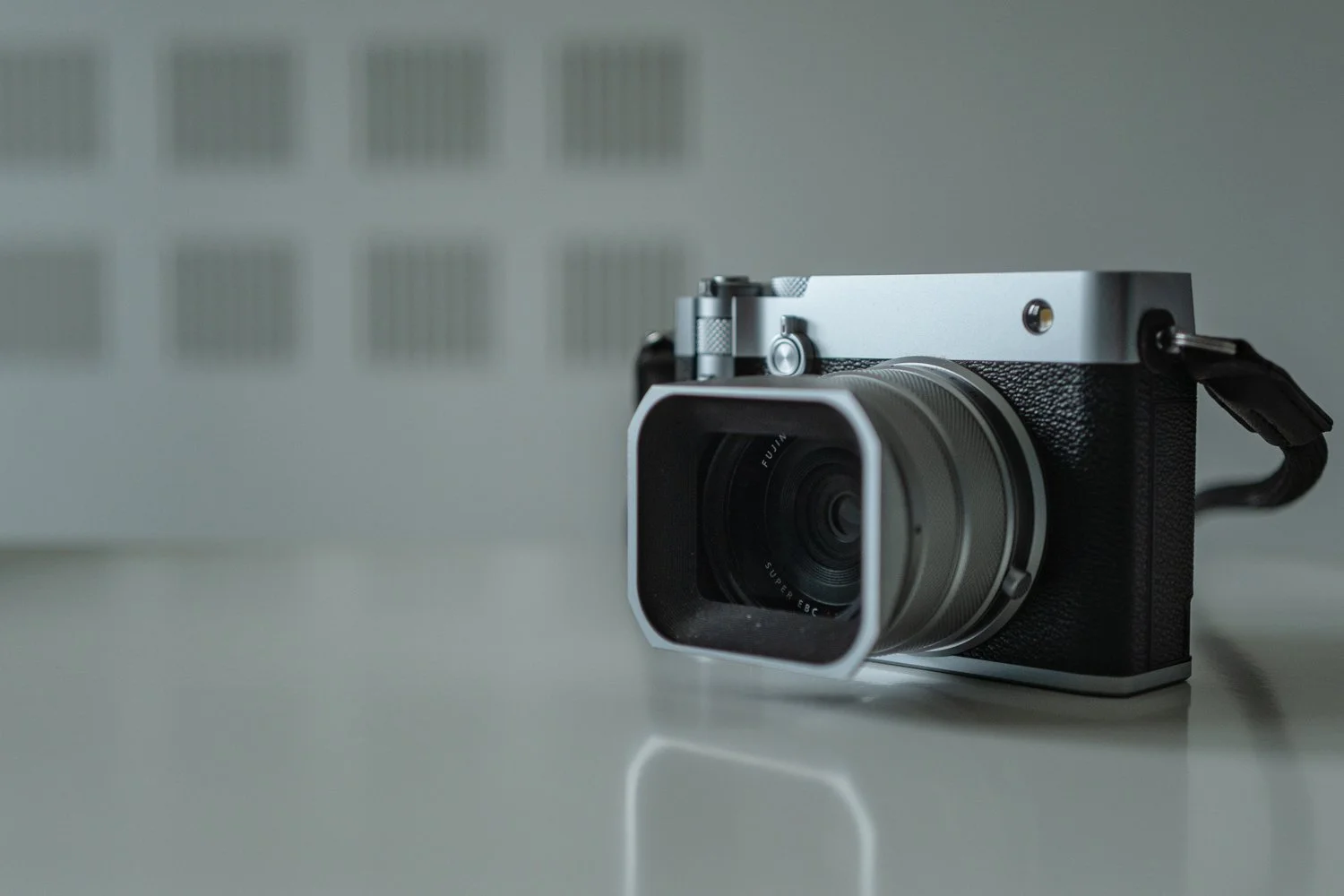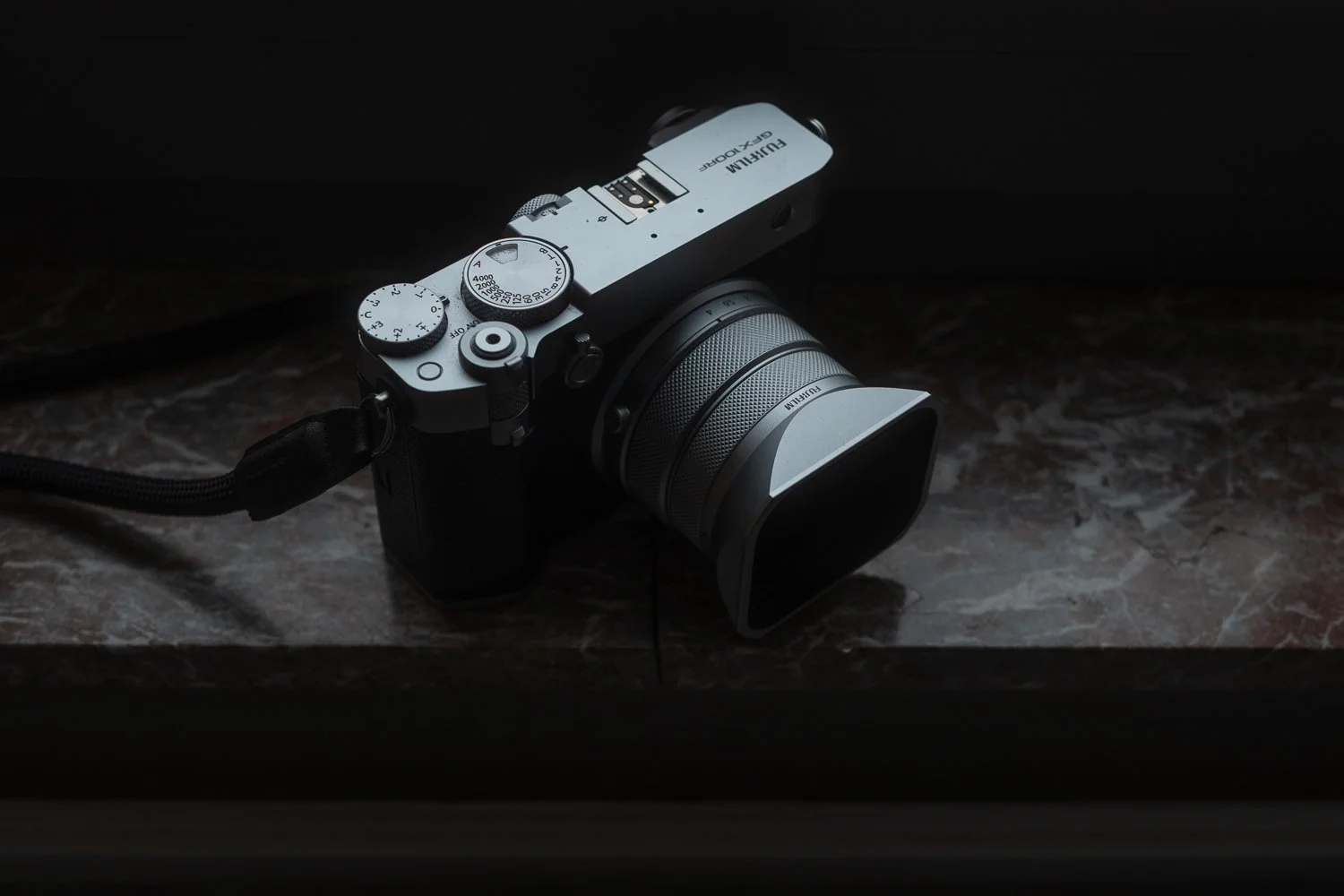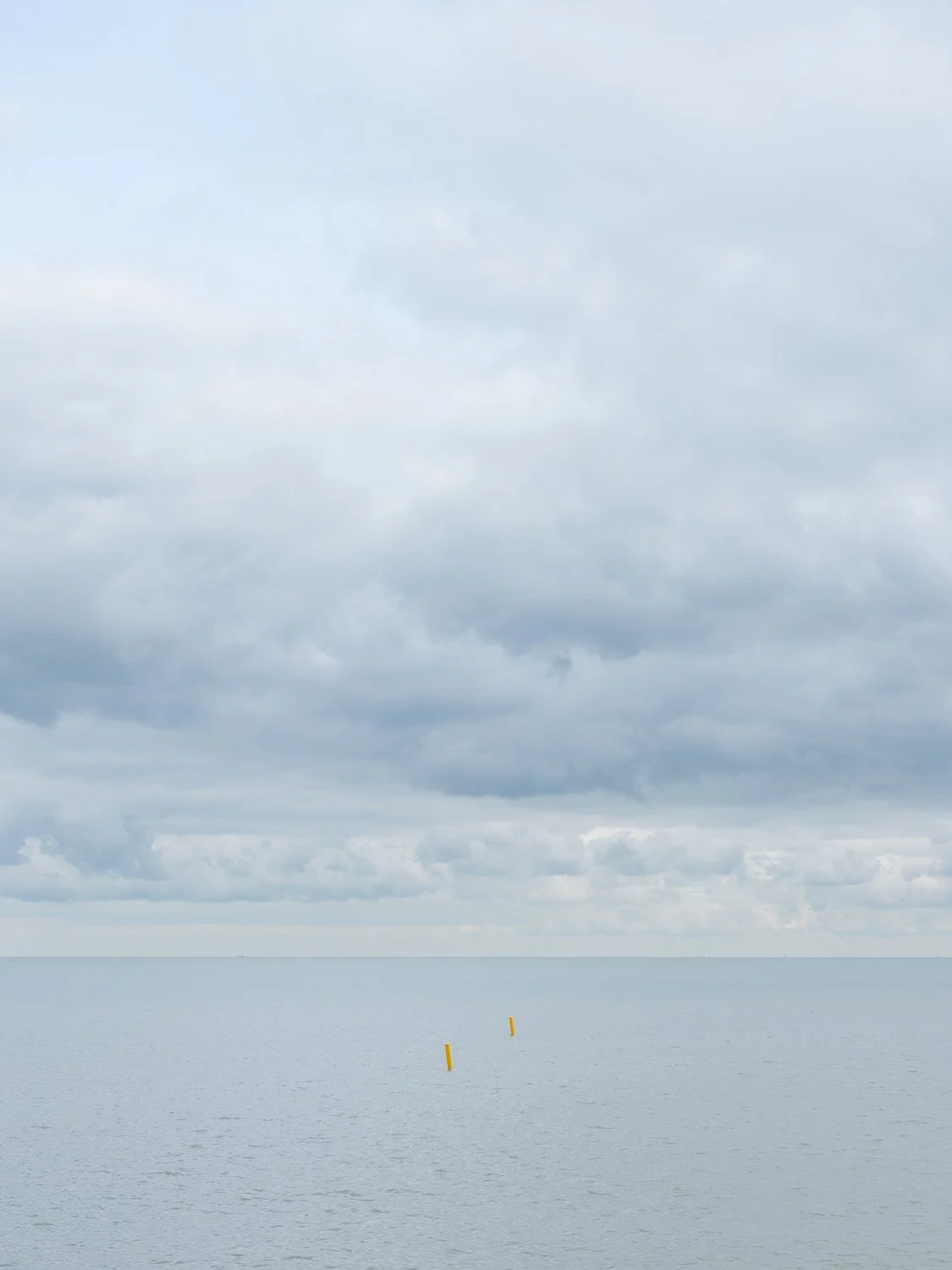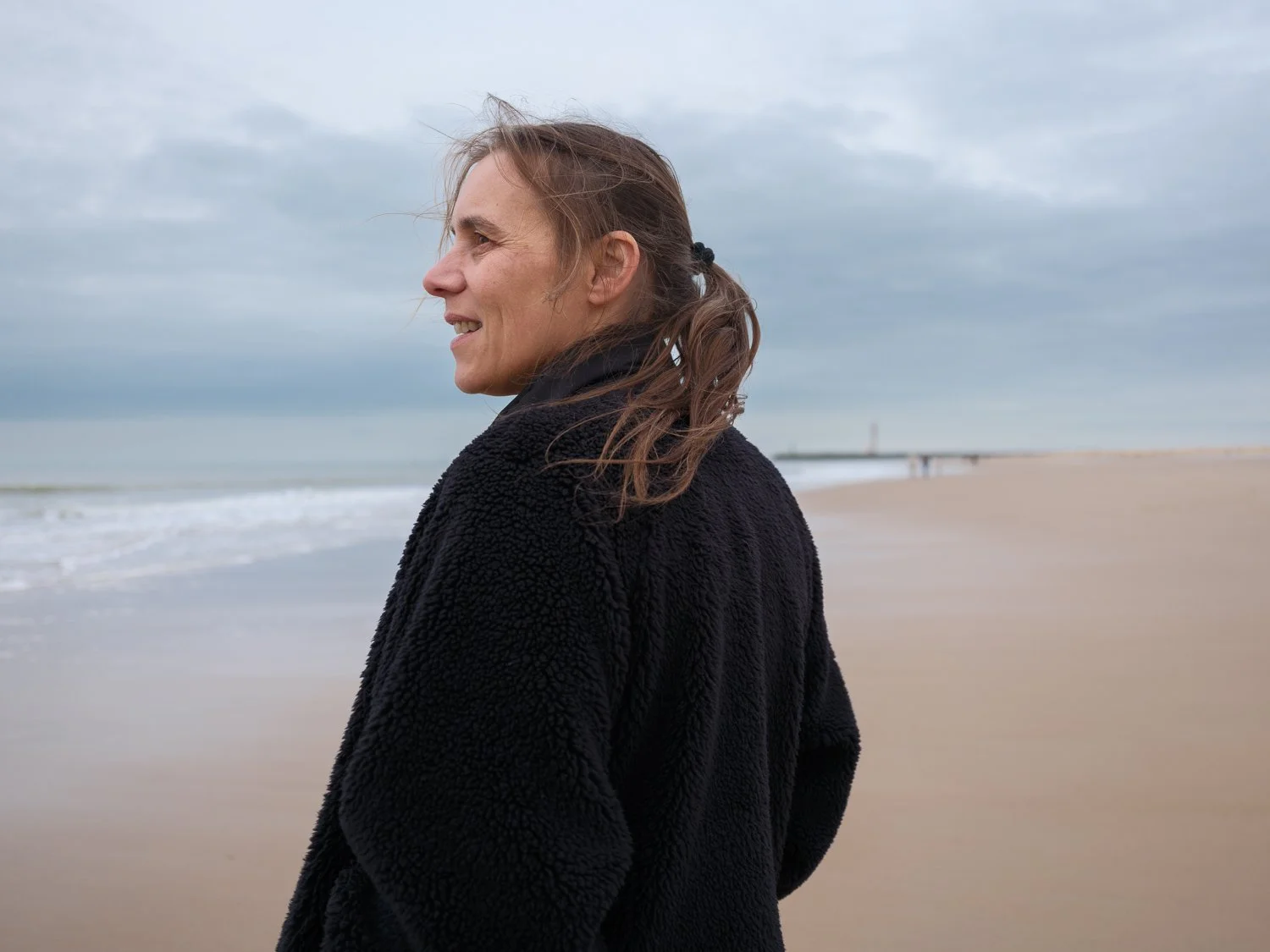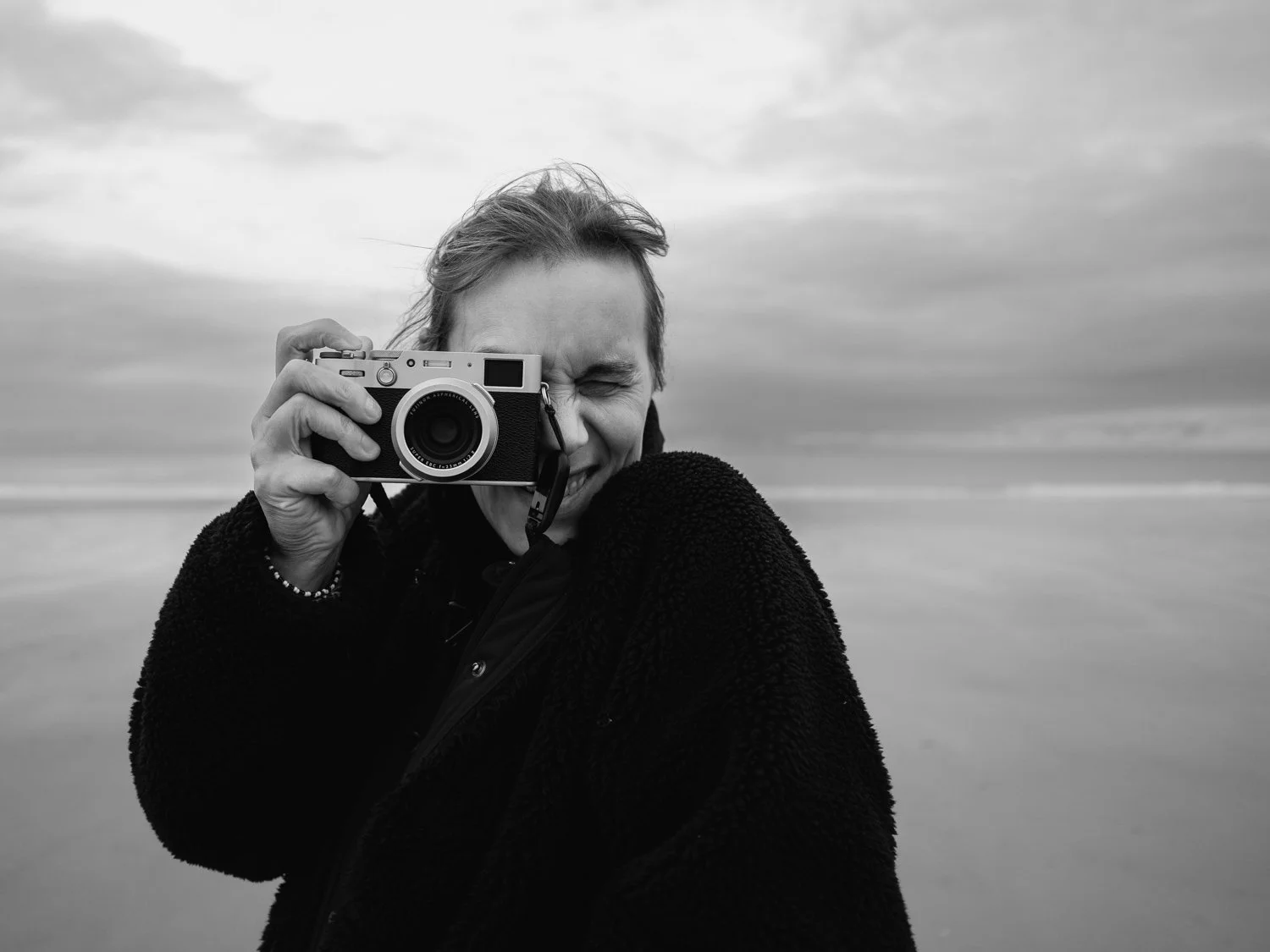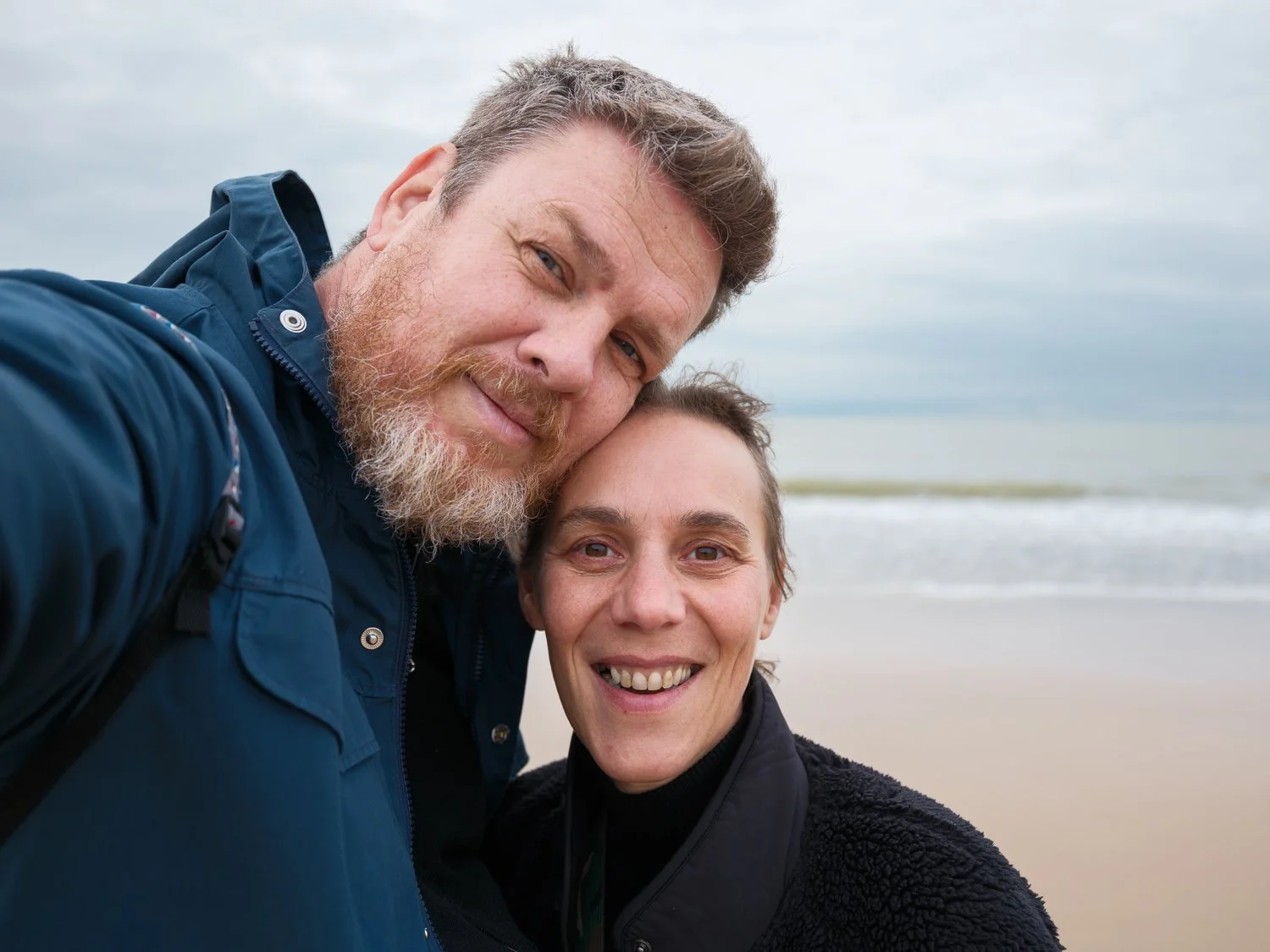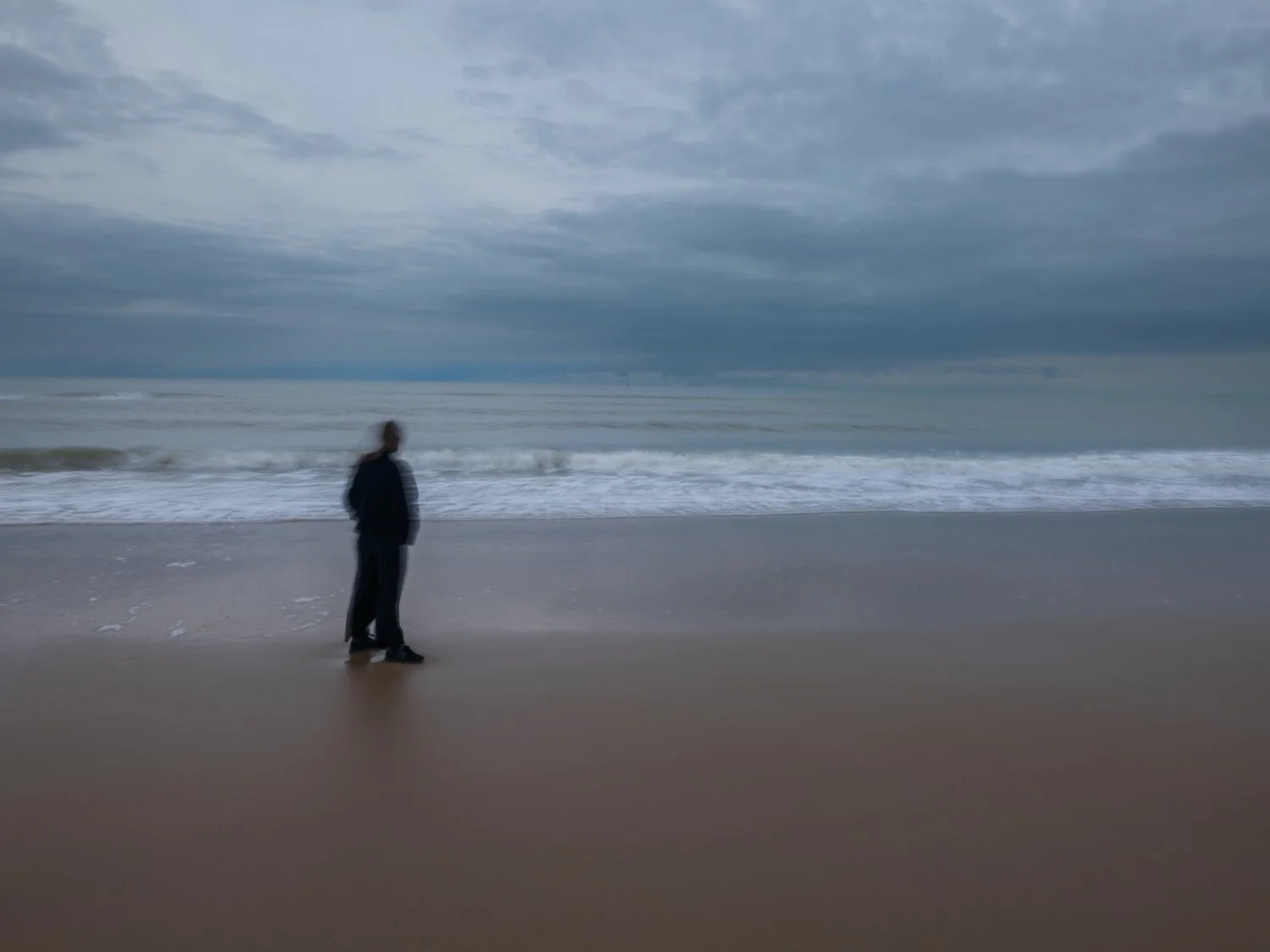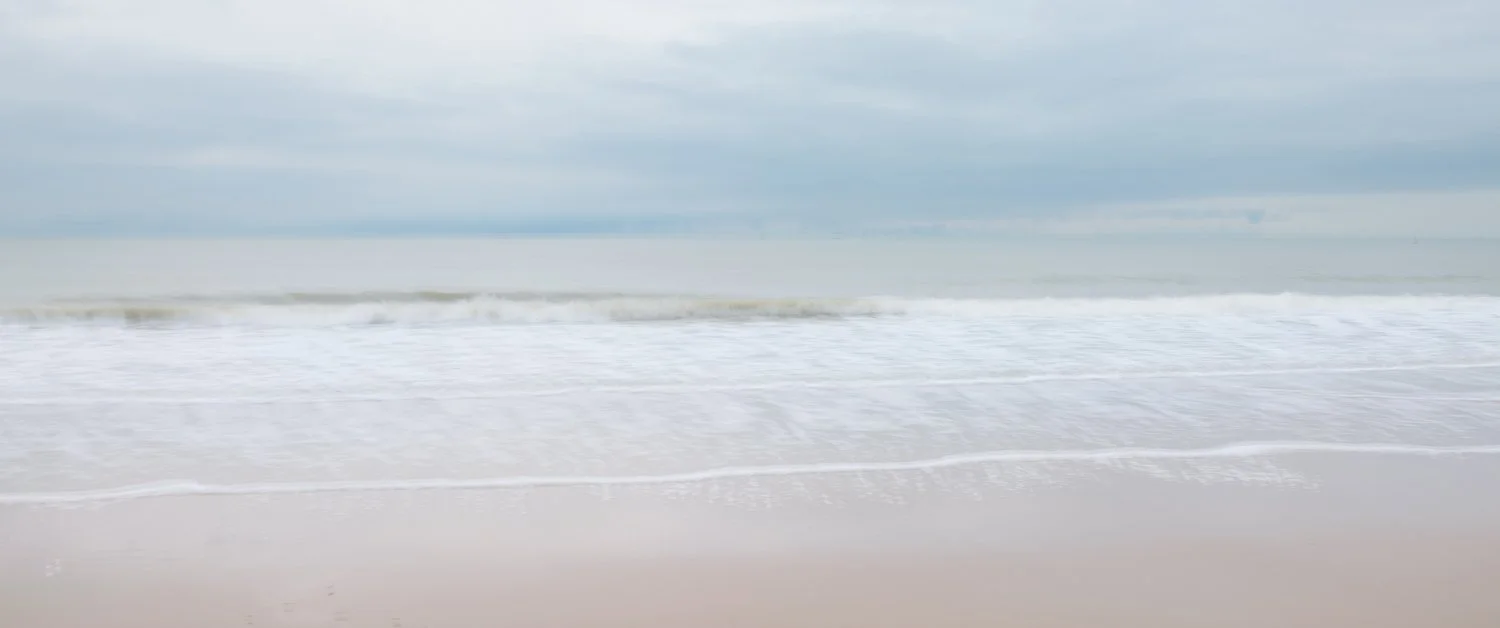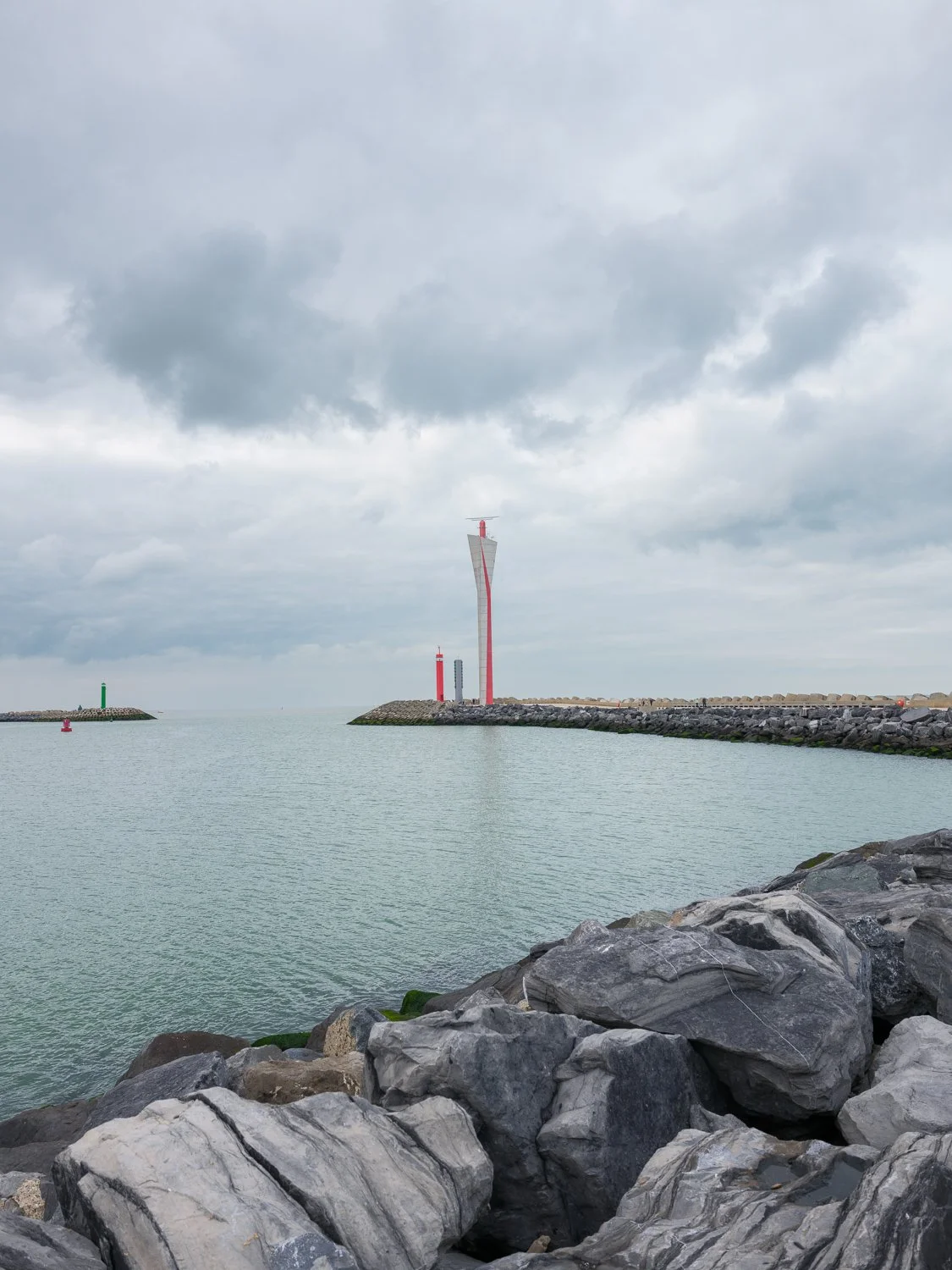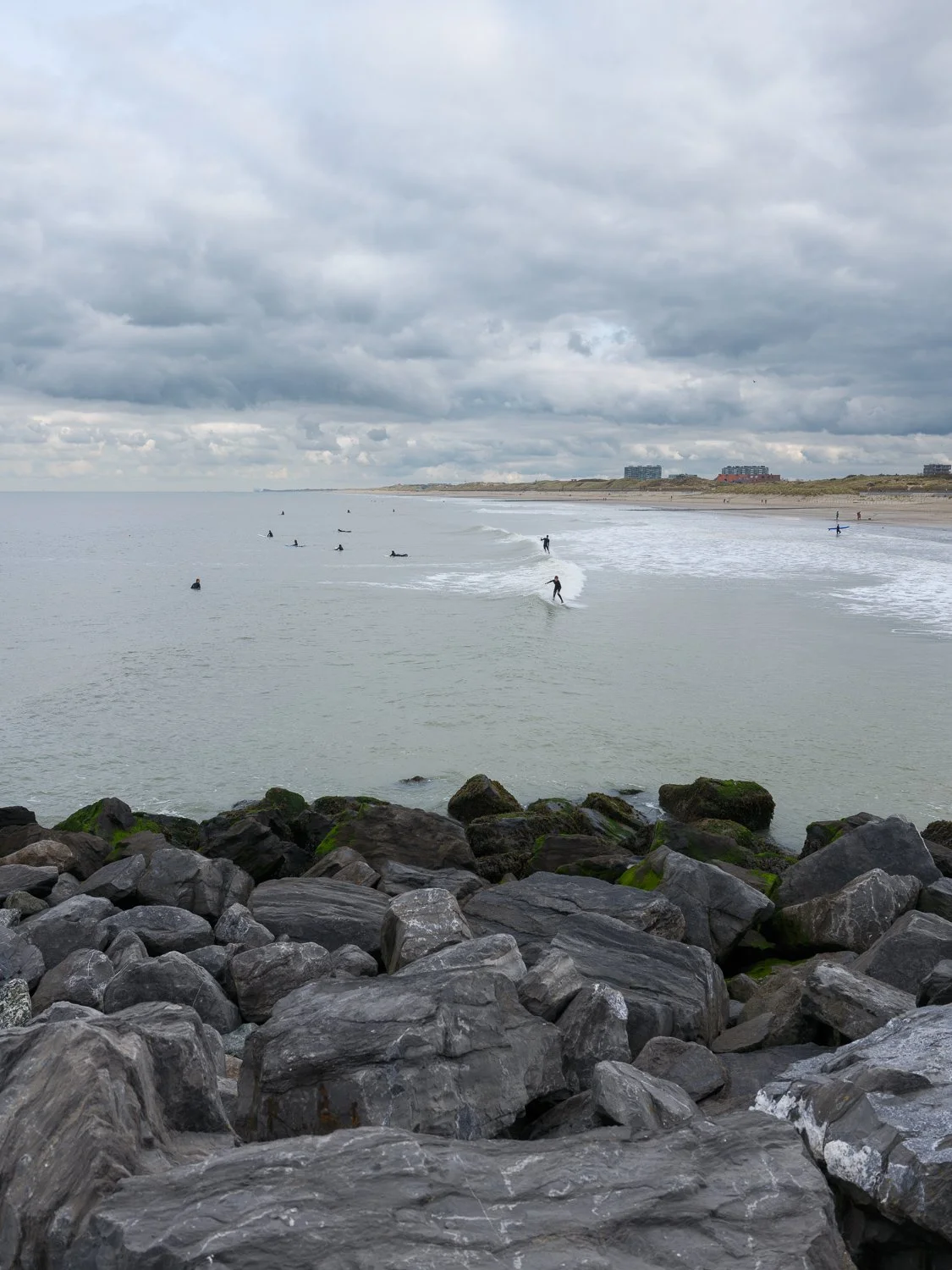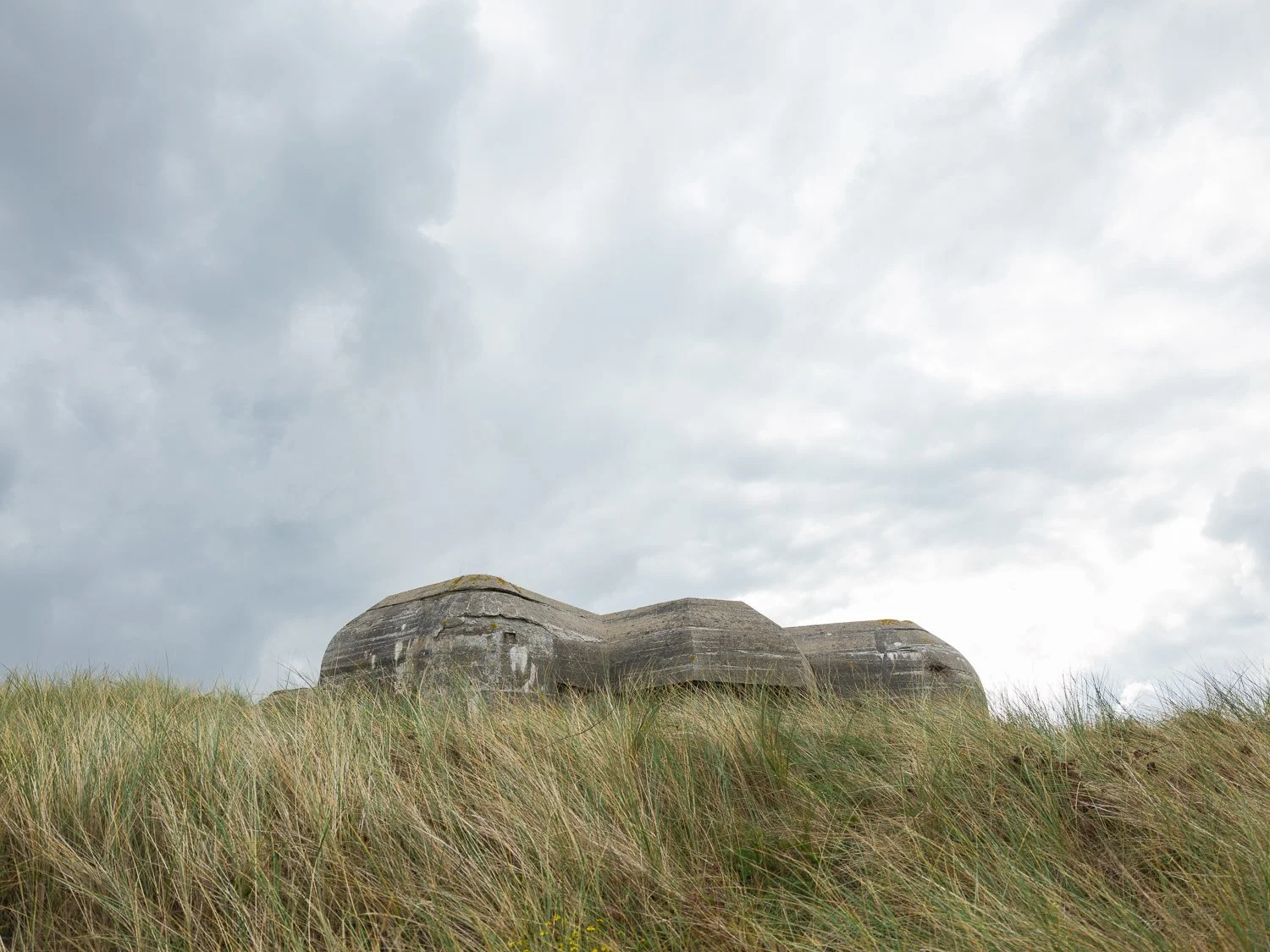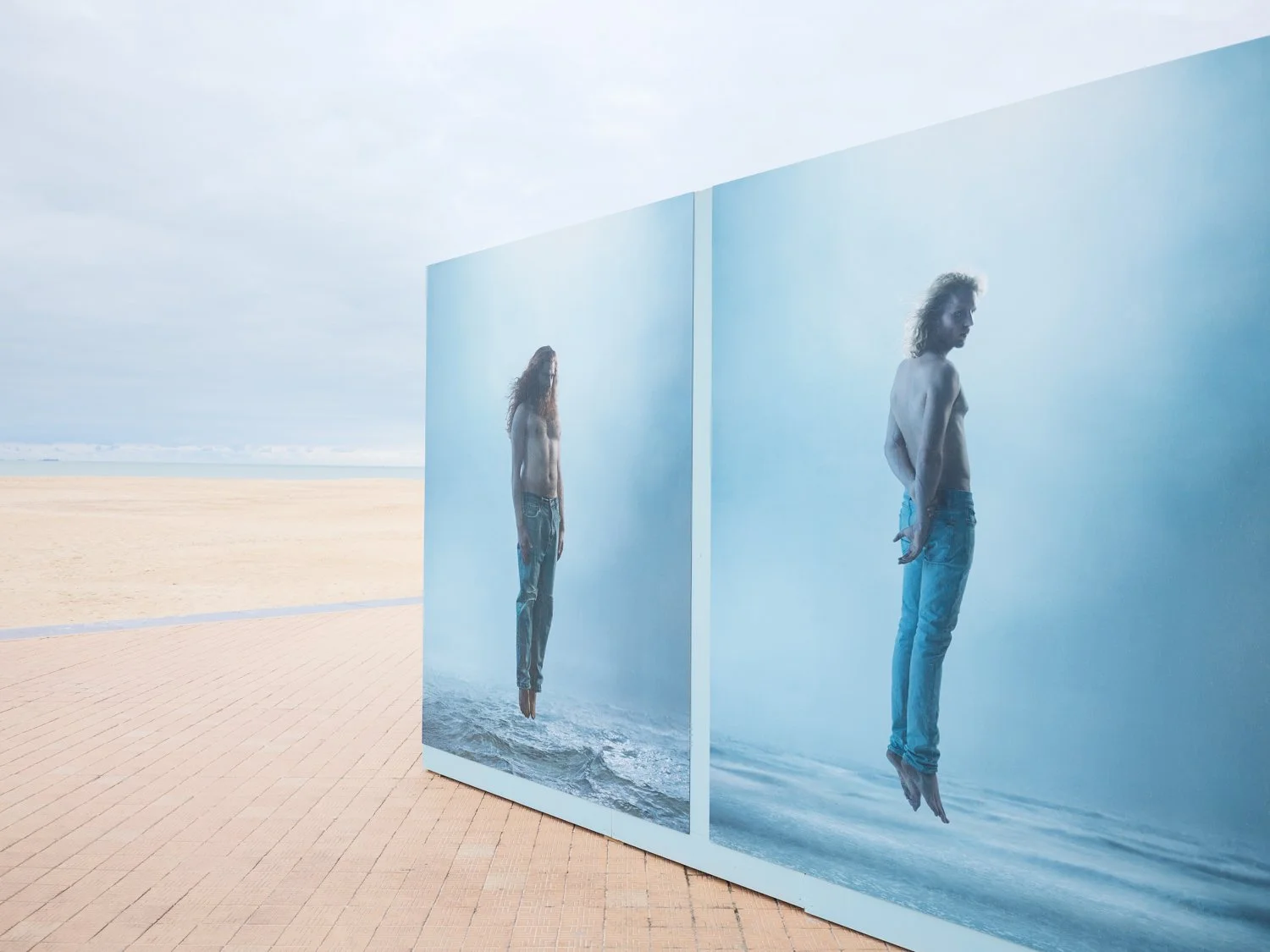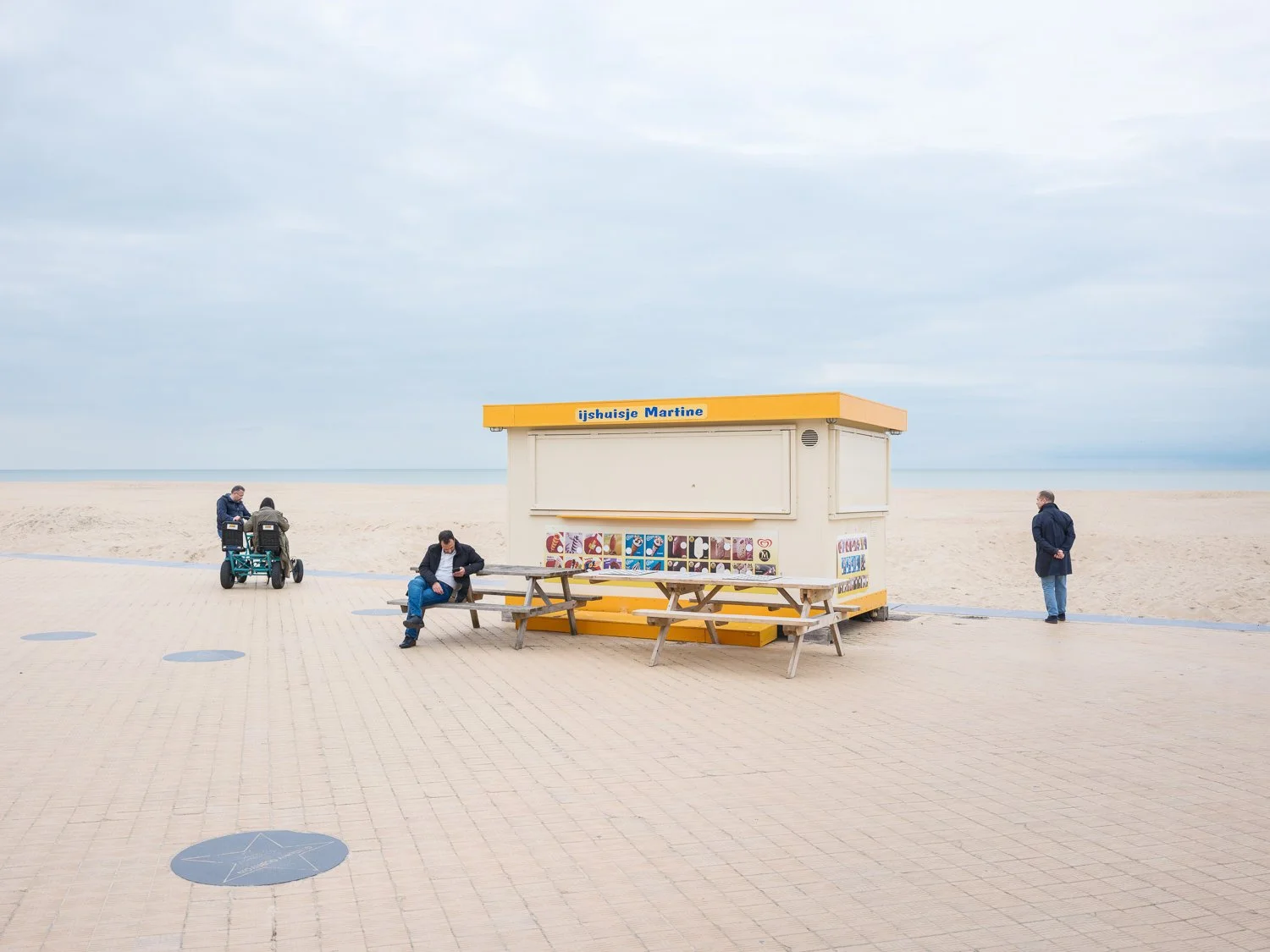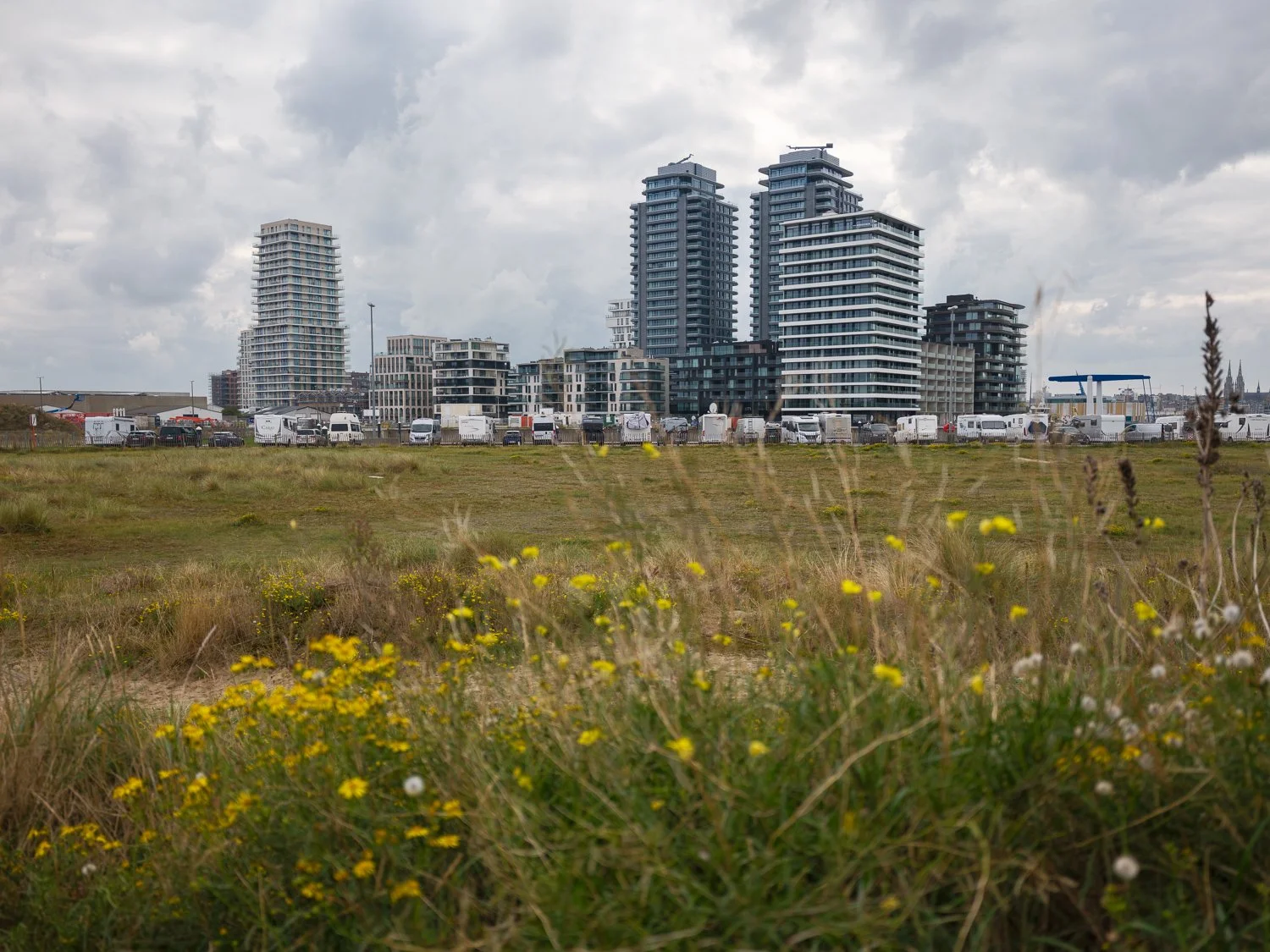The Painter’s Camera – A Short Encounter with the Fujifilm GFX100RF
I only had the Fujifilm GFX100RF for a couple of days. Not enough time for a technical deep dive, but enough to get a feel for its character. I spent a day or two playing around with it, learning the controls, and getting comfortable. Then I took it for a one-day trip to the Belgian coast — a place that always gives me a sense of space, calm, and reflection. It felt like the perfect environment for this camera.
I wanted to see if the GFX100RF could become what I like to call the painter’s camera — a camera for slow, deliberate photography, where every frame feels like a “tableau”.
First impressions
The GFX100RF is a beautifully designed object. It looks premium, feels solid, and has that typical Fujifilm charm. I tested the silver version, and while it’s gorgeous, I’d probably go for the black one myself — a bit less conspicuous, a bit more “working tool.” Still, the silver version does turn heads, and that counts for something when you believe that design is part of the joy of using a camera.
It comes well equipped too: a metal hood, a filter adapter with a protective filter, even a rope strap, a nice touch, though too short to wear cross-body (that is when it has to go across MY rather bulky body). You can tell Fujifilm wanted this to feel complete. It doesn’t come with a charger but that’s the standard these days.
“A beautifully designed camera — balanced, precise, and confident in its simplicity. The kind of object that reminds you that design still matters.”
“Premium without being pretentious. Every dial and curve feels considered. It’s a tool that invites calm, deliberate use — even when it’s just sitting still.”
Ergonomically, it’s easy to handle if you’re used to Fujifilm cameras. The new aspect-ratio dial is an interesting choice. I’m not sure it’s something that I NEED, but it doesn’t get in the way and I’ve come to appreciate it during my time with the camera.
The day at the coast
I went to the seaside with the camera around my neck and nothing else. I wanted to travel light and stay open. The goal wasn’t to do a scientific test, but to just see.
The weather was kind — calm light, a slight haze, a bit of wind. I walked for hours, letting the rhythm of the waves slow me down. That’s when the GFX100RF started to make sense: it’s not a camera for coverage or productivity. It’s a camera for presence.
ISO 200 | f/4 | 1/640s
“Minimal, balanced, and peaceful. The 4:3 aspect ratio feels like a painting — calm, centered, and content to just hold the image steady.”
That image set the tone for the rest of the day. It’s nothing spectacular, but it feels right — open, quiet, complete. The 4:3 frame helps. It has a compositional stillness that keeps everything grounded, like the proportions of a painting.
As I walked, I noticed I was gravitating toward solitude again — a recurring theme in my work. The coast can feel empty, but never lonely. This camera fits that mood perfectly. It doesn’t shout. It just listens.
Portraits and people
Later that afternoon, I made a few portraits. Now, a wide and relatively slow lens isn’t what you’d call ideal for portraiture, especially on medium format. Still, the results surprised me. They weren’t typically portrait-flattering — not much bokeh, little subject isolation magic — but they felt honest.
ISO 200 | f/4 | 1/500s
“A straightforward portrait — unforced and open. The unspectacular rendering brings honesty to the frame.”
ISO 160 | f/4 | 1/400s
“Wide and slow isn’t supposed to work for portraits, but it does — if you let go of expectations. The lens doesn’t flatter; it describes.”
ISO 200 | f/4 | 1/320s
Taking selfies on a medium format camera, why not? The lens is wide enough to do this with the length of my arm. And as my buddy Kevin Mullins says: “Pictures don’t have to be spectacular to be important.”
The GFX100RF renders people with a kind of visual honesty that I love. There’s nowhere to hide — which can be confronting, but also liberating. These portraits aren’t about idealisation; they’re about realness.
The technical “limitations”
Everyone talks about the GFX100RF’s two supposed flaws: the f/4 lens and the lack of IBIS. They’re not wrong — these factors do limit what you can do technically. But they also invite a different way of working.
In bright light, the lens is more than fine. But when the sun dips, you quickly hit high ISO (which is still very usable to me) or slow shutter speeds. During my brief time with the camera I didn’t get into situations were it was too dark to use a sensible shutter speed so I forced the issue of trying to be creative with a slow shutter (handheld).
I set the camera to ISO 100, closed down to f/11, activated the 4-stop ND filter, and let the shutter run at 0.8 seconds. Predictably, there was motion blur and camera shake. But instead of ruining the shot, it turned it into something softer and more painterly.
ISO 100 | f/11 | 0.8s
“Too slow to freeze movement — and that’s the point. The blur becomes texture, not error.”
ISO 100 | f/11 | 0.8s
“Technical imperfection as creative opportunity. Sometimes the world moves, and the photo should too.”
That’s when it clicked for me: this isn’t a camera for solving problems; it’s a camera for embracing them.
The structure at sea
A little later I noticed a solitary structure out in the water — some kind of marine platform. It stood there, quiet and distant, framed by the curve of the breakwater boulders. It felt like a metaphor for this whole experience: distant, calm, and alone, yet somehow still connected to the shore.
ISO 200 | f/4 | 1/500s
“A structure at sea — far enough for peace, close enough to still belong. The X-Pan crop adds a cinematic touch.”
It’s probably my second-favourite frame from the day. The cinematic crop gives it a different mood — less painterly, more filmic — but still deeply quiet.
The smaller moments
Not every frame has to carry a big message. Sometimes you just make a photograph because it feels right.
ISO 250 | f/4 | 1/800s
“Red, green, and grey. Simple, graphic, balanced.”
ISO 320 | f/4 | 1/1000s
“Surfers waiting for waves. Patience, repetition, rhythm — all the same things this camera teaches.”
ISO 200 | f/4 | 1/640s
“Old bunker in the dunes. A quiet reminder that stillness often hides history.”
ISO 160 | f/4 | 1/500s
“Art by the sea — Currently the International Photo Biennal Ostend is going on, worth a visit. Pictures by the amazing Frieke Janssens”
They might not all be “great” pictures, but they belong to the same story — a day of looking without rushing.
Reflections after returning the camera
I had to return the GFX100RF sooner than I’d wanted — just as I was getting into the rhythm. But maybe that’s a good thing. It left me wanting more, and that’s always a healthy sign.
Was it the camera that made the day so enjoyable? Or the perfect autumn light at the coast? Or maybe just the freshness of working with something new? Probably all of those. But what stayed with me most was how natural the day felt. The camera never got in the way. It just hung around my neck, quietly ready whenever I saw something worth noticing.
It didn’t feel like work. It just felt like walking and breathing — with a camera quietly waiting for a moment that deserved attention.
It reminded me of something important: I don’t always need flexibility. Sometimes I need constraint. A big system with interchangeable lenses might have given me close-ups of the seals on the fenced of beach or creamy portraits in backlight, but I doubt I would’ve been as present. The fixed lens forces you to stay within your frame — literally and mentally. And there’s freedom in that.
The One
Every review needs a conclusion, and for me, it came as a picture.
ISO 200 | f/4 | 1/400s
“The Painter’s Camera. Quietness, balance, and solitude — everything this camera stands for.”
This is the image I’ll print large — It’s recognisable, timeless, and balanced. The kind of photo you don’t have to explain. It’s the one that brings everything together for me: design, simplicity, slowness, honesty.
That’s what the GFX100RF does best — it slows you down until you see something real.
Extra Gallery
Here are some more pictures that I’ve shot with the GFX100RF during my day at the coast:
Final thoughts
The Fujifilm GFX100RF isn’t an all-rounder, and that’s its strength. It’s not for chasing moments; it’s for holding them still. It could do all that but there are cameras that do it better. The GFX100RF is for photographers who don’t mind walking slower, thinking longer, and coming home with fewer frames.
It’s not spectacular. But maybe that’s the point.
And if I learned one thing in these two short days, it’s this:
A camera that helps you make one great picture — one that truly stays with you — is worth far more than a camera that makes a hundred good ones.
Free download pack
If you’d like to follow along, I share new stories, reflections, and occasional behind-the-scenes thoughts through my newsletter — small notes about gear, craft, and life, written at the same slow pace I try to photograph with.
I’ve made a small download pack to go with this post — The Quiet Painter Companion
It includes the Lightroom presets I made for these images and a few high-resolution sample files.
It will be available for free soon to newsletter subscribers as a small thank-you for following my work.
